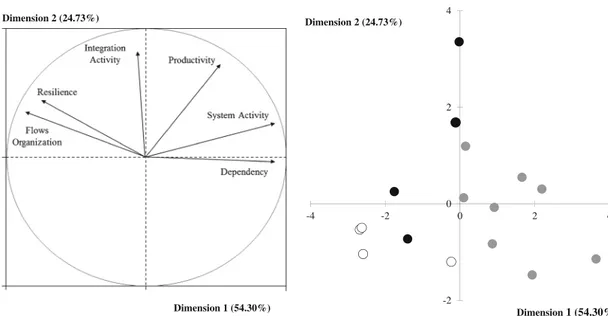Crop-livestock integration determines the agroecological performance of mixed farming systems in Latino-Caribbean farms
Texte intégral
Figure




Documents relatifs
solani (b) treated with 0–30 µg/mL MMTS or kanamycin, Figure S5: Trapping of MMTS by cysteine in the growth medium, Table S1: Growth parameters obtained for Bakers’ yeast grown
Tables 5 and 6 give the calculated data com- piled to assess the sustainability of the family farms based on indicators related to the degree of diversification and integration (
Changes in the practice of storing forage crop residues (a), forage crops (b) according to the classes of mixed crop-livestock farming systems (see Table 1.1)...
An agropastoral diagnosis has highlighted 4 types of crop-livestock farms according to the degree of intensification and integration of production systems (Blanchard et al., 2018):
The lecturers of the International Scientist School on ACP were: Dr Jean-Noël Aubertot (INRA, France), Dr Philippe Cao Van (Cirad, Laos), Dr Jean-Philippe Deguine (CIRAD,
We identified two main trends and five archetypical systems: a centrifugal trend of specialization, toward cash crop (1) or dairy herd (2) in favourable areas,
The gross energy efficiency (GEE) was also calculated, as well as other indicators describing integration practices, such as the amount of manure available per
Some data were quantitative and related in particular to the structure (e.g. area, number of animals, age at first parturition, inter-parturition time, size of the plots), the